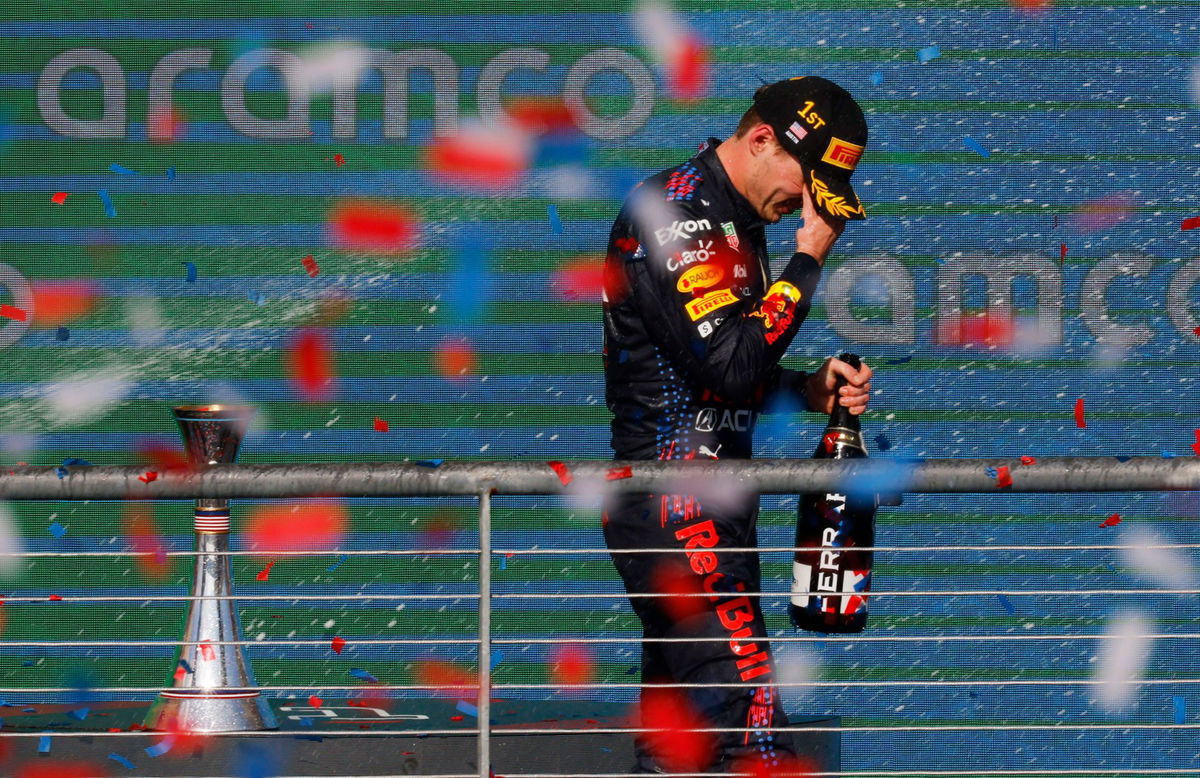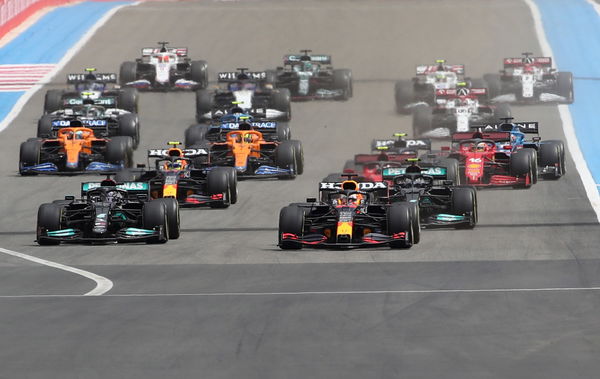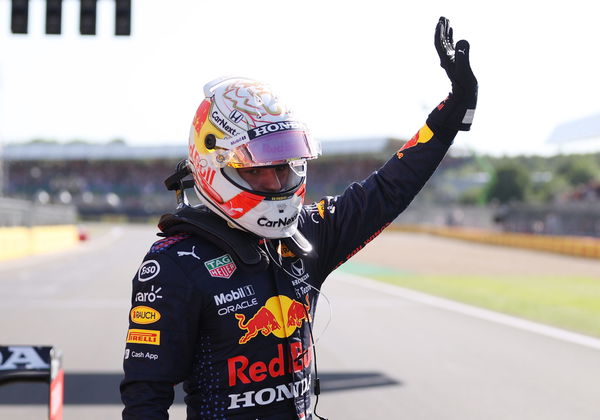
Reuters
Formula One F1 – United States Grand Prix – Circuit of the Americas, Austin, Texas, U.S. – October 24, 2021 Red Bull’s Max Verstappen celebrates on the podium after winning the race REUTERS/Brian Snyder

Reuters
Formula One F1 – United States Grand Prix – Circuit of the Americas, Austin, Texas, U.S. – October 24, 2021 Red Bull’s Max Verstappen celebrates on the podium after winning the race REUTERS/Brian Snyder
The biggest Formula One season yet comprising a whopping 23 races is all set to begin in a month’s time at the Bahrain International Circuit. And, in the build-up to the exciting new F1 campaign, there have been far too many surprising decisions in recent weeks.
Watch What’s Trending Now!
Only yesterday, F1 affirmed that there will not be any media coverages of the three-day testing in Barcelona nor will there be any revelation regarding the timesheets. Hence, it almost looks like the sport is keen on keeping the fans blindfolded of the first testing results and sustaining the hype until the teams arrive in Bahrain.
And now, here’s another shocking change that F1 will be imposing over the 2022 season. Citing the humongous racing calendar, the F1 think-tank has decided to bring the duration of the race weekends down to three days. This also includes Monaco which has mostly preferred hosting the FP1 and FP2 sessions on Thursday.
ADVERTISEMENT
Change in duration of a race weekend?
Until the 2021 season, the build-up to a race weekend goes by this order; Press conference/Track walk on Thursday followed by FP1 and FP2 on Friday. However, come 2022, this will not be the case. There will not be any kind of event coverages on Thursday. Meaning, press conferences will happen on Friday morning.

Reuters
Formula One F1 – French Grand Prix – Circuit Paul Ricard, Le Castellet, France – June 20, 2021 Red Bull’s Max Verstappen, Mercedes’ Lewis Hamilton, Mercedes’ Valtteri Bottas and Red Bull’s Sergio Perez in action at the start of the race REUTERS/Yves Herman
Consequently, both FP1 and FP2 sessions will be moved further into the day. The new sporting regulations state that media activities will be for a “maximum duration of two hours, finishing no later than one hour and 30 minutes prior to the start of P1.”
ADVERTISEMENT
Hence, the drivers will spend their time with journalists barely over an hour away from setting foot into their cars.
ADVERTISEMENT
Watch Story: Biggest Crashes From 2020 Featuring Leclerc, Vettel & Grosjean
Is this good or bad for F1?
Let’s start with the positives! As F1 mentioned, this change would most certainly help the teams with the much-needed extra bit of time to prepare their garages ahead of a race weekend. Moreover, this season comprises 23 race weekends with one too many double-headers and even triple-headers.
ADVERTISEMENT

Reuters
Formula One F1 – British Grand Prix – Silverstone Circuit, Silverstone, Britain – Red Bull’s Max Verstappen celebrates after winning sprint qualifying Pool via REUTERS/Lars Baron
Hence, the teams will need enough time to get themselves prepped up for the weekend. However, at the same time, squeezing too many sessions into a span of three days may drain out the drivers and could even leave them out of juice by the time the main event arrives on Sunday.
What’s more, following the same protocol over weekends with sprint races could prove to be even worse. So, this particular change does look to be rather bitter-sweet for the teams and drivers. So, will this rule change potentially lead to fatigue for the drivers and the engineers?
ADVERTISEMENT
Read More: Why do F1 Drivers Train Their Necks?
ADVERTISEMENT
ADVERTISEMENT
ADVERTISEMENT

